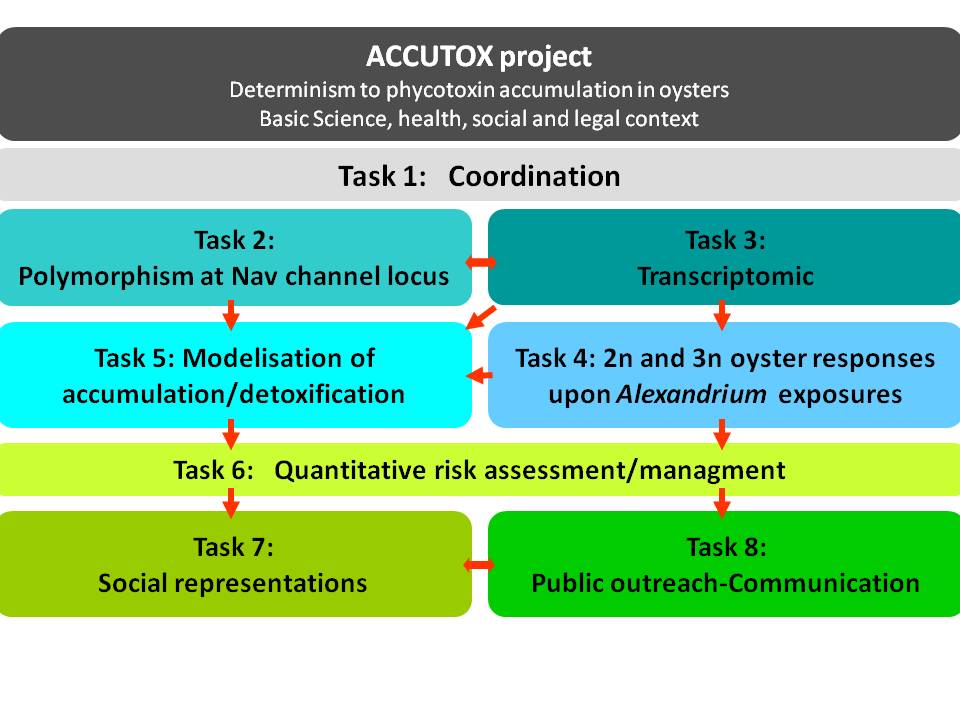Organisation of the project
ANR ACCUTOX is structured in 8 tasks:

Figure 2: Organisation and structure of the different tasks of the ANR ACCUTOX project
Task 1 is specifically dedicated to coordinating the work of research, scientific leadership, management, administrative and financial organization and logistics of the project. Task 2 will focus on the first hypothesis regarding toxin accumulation, testing the relationship between toxin accumulation and polymorphism at the sodium channel locus in oysters. Task 3 will test the second hypothesis, relating toxin accumulation to physiological responses at the individual level using oligoarrays. Task 4 will be devoted to laboratory and in situ experiments, assessing individual polymorphism but also physiological responses of diploid and triploid oysters associated to differential toxin accumulation, following exposure to Alexandrium sp. The physiological responses will include the expression of candidate genes identified in task 3, but also the physiological parameters already known to be affected by PSTs and/or Alexandrium exposure. The task 5 will consist in modelling toxin accumulation and detoxification in the oyster tissues by considering physiological variables and in providing the theoretical data needed in task 6 to analyze the human health risk associated with shellfish contamination. Task 7 will aim to assess the representation of risk and scientific uncertainty regarding contaminated oysters by innovative approach in psycho-sociology and a theoretical approach to its translation into law. Finally, Task 8 will focus on developing public awareness, knowledge and understanding of the topic of HABs and their impact on bivalve species, by developing a set of communication tools.

